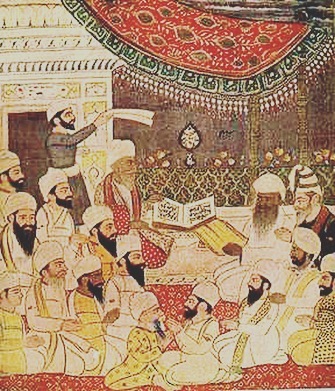SATGUR KA VANS, by Bhai Ram Singh, is a late nineteenth century work in the genealogy genre. No biographical information about the author is available. The work gives, though in a rather arbitrary manner, information about the ten Gurus, their birth, parentage, children and death. The information contained is sketchy and not very reliable. The language used is simple Hindi and the style, of writing is fairly racy. The work is included in the Gurpranali edited by Randhir Singh and published by Shiromani Gurdwara Parbandhak Committee, Amritsar.
Exploring “Satgur Ka Vans”: Unveiling Sikh Gurus’ Lineage
“Satgur Ka Vans” is a notable genealogical work from the late nineteenth century that attempts to trace the lineage of the Sikh Gurus. Although its details are sometimes sketchy and not always in keeping with the rigour of later historical scholarship, the text provides valuable insight into the early efforts by Sikh scholars to document and preserve the sacred family tree of their spiritual leaders.
Historical Background and Composition
- Authorship and Era:
Composed in simple, accessible Hindi by Bhai Ram Singh during the late nineteenth century, “Satgur Ka Vans” emerged during a period when there was heightened interest—both from within the Sikh community and among British colonial administrators—in documenting the origins and development of Sikh identity. Unfortunately, not much biographical information is available about the author himself, which adds a note of caution regarding the text’s historical precision. - Purpose and Context:
The work was part of a broader genre of genealogical literature aimed at chronicling the ten Gurus—from Guru Nanak to Guru Gobind Singh. In a time when the Sikhs faced both internal and external challenges to their identity, compiling a clear record of their Gurus’ lives was seen as a way to assert authenticity and establish continuity with the divine mission inaugurated by Guru Nanak. Content and Structure - Genealogical Details:
“Satgur Ka Vans” offers a concise account of key life events for each of the Sikh Gurus. It lists essential details such as their birth, parentage, children, and death. While these entries are presented in a straightforward manner, the ordering and the selection of details can sometimes seem arbitrary. The text does not aim for exhaustive biographical narratives but rather provides a skeletal genealogy intended to serve as a collective memory for the community. - Style and Language:
The language of the work is simple and direct. Its racy style makes it accessible to a wide audience but also means that it often sacrifices nuance and comprehensive detail. The work is noted for its unadorned presentation, using a format that was typical for genealogical accounts of that period in Sikh literature. - Publication and Editorial History:
“Satgur Ka Vans” is included in the Gurpranah‘ari series (as edited by Randhir Singh and subsequently published by the Shiromani Gurdwara Parbandhak Committee, Amritsar). This inclusion reflects its continued relevance within the corpus of Sikh historical texts, despite questions about its reliability. Scholarly Reception and Limitations - Reliability and Critique:
Modern historians often point out that the information contained in “Satgur Ka Vans” is presented in a rather sketchy manner compared to the detailed biographies found in canonical texts. Its straightforward account of the Gurus’ lives does not always align with the more carefully corroborated details in other sources like the Janam Sakhis or the Guru Granth Sahib’s internal references. As such, while the work is valued for its role in preserving a sense of lineage, its details are treated with necessary scepticism in academic circles. - Impact on Sikh Identity:
Despite its limitations, the text played an important role in reinforcing the idea of a divine and unbroken line of Gurus—a concept central to Sikh identity. It helped to consolidate the collective memory of the community by offering a visible, if somewhat rough, portrait of the Gurus’ familial legacy.



